Shure Aonic 50 wireless noise-canceling headphones review
The Aonic 50 are Shure’s first pair of wireless noise-canceling headphones. Starting at $399, the Aonic 50 are definitely in the premium category of wireless headphones and compete against the likes of the Bose Headphones 700 and the Sony WH-1000XM4.
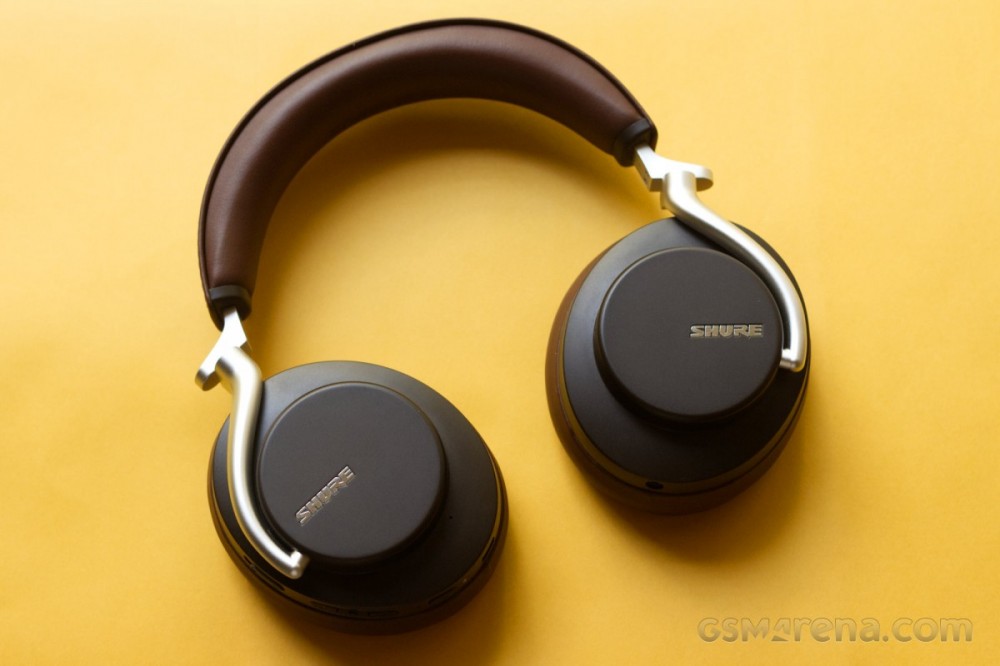
Shure is an audio equipment manufacturer that has been operational since 1925. The company excels at making professional audio gear such as recording equipment, microphones, studio headphones, and in-ear monitors that have been used in audio production for decades. With the Aonic 50, Shure aims to bring some of that professional audio pedigree to the wireless headphones world.
Design
The Shure Aonic 50 are a fairly large and bulky pair of headphones. They are easily larger than all of their main competitors and look more like home audio equipment than something you’d want to wear outdoors.
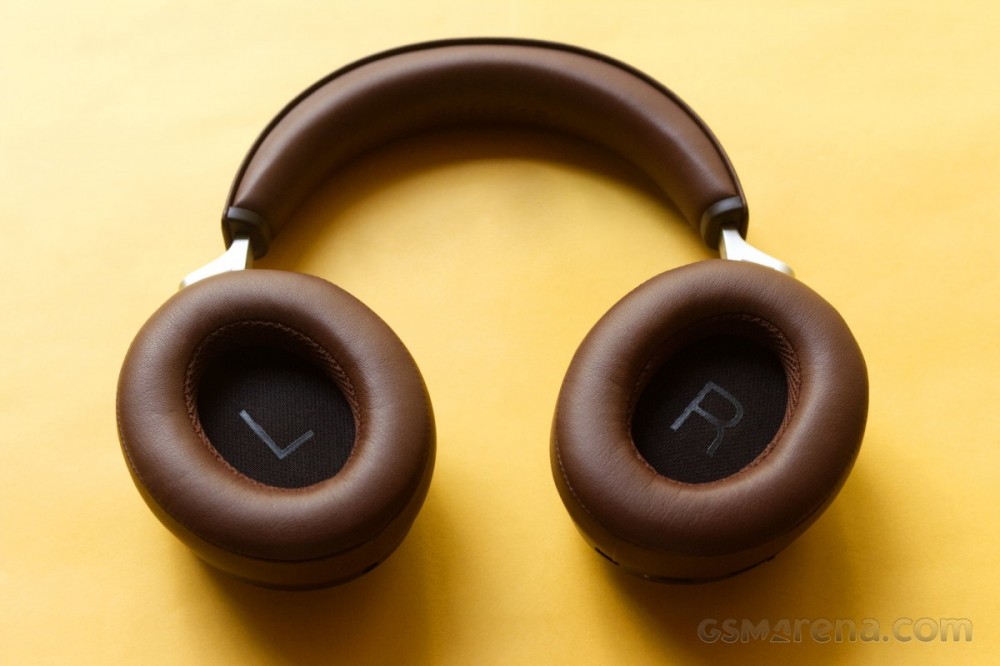
A big part of the headphones are the earcups that are the size and shape of donuts. These massive earpads have thick cushions inside with a soft, leather-like material on the outside and a fabric-like material on the inner edge. The nice thing about the earcups is that they come off rather easily with a quick twist and Shure sells replacement pads.
The headband has more of the leather-like material on the underside with a stiffer version on the top, complete with fake leather stitching. The material is soft and pleasant to touch and seems more hard wearing than the more tacky version seen on other headphones that shreds itself in a few months.

The headband can be adjusted by sliding out the yokes from either side. The yokes slide out with a clicking mechanism and there are also markings made on the inner side so you can match them on both sides. The headband has a decent amount of travel and my medium sized head sat in the middle of the adjustment length.
Like the Sony 1000XM4, the headband can’t really be adjusted easily when the headphones are on your head, and you are forced to remove them every time if you want to adjust their length.
The earcups don’t have a tremendous amount of articulation and basically just turn in one direction to lie flat. Unfortunately, the earcups are just too wide for you to be able to keep them around your neck in this position without choking yourself so it’s better to not turn the earcups around at all. Also, because the headphones don’t fold much, the supplied carry case is the size of dinner plates and measures around 25cm in diameter.
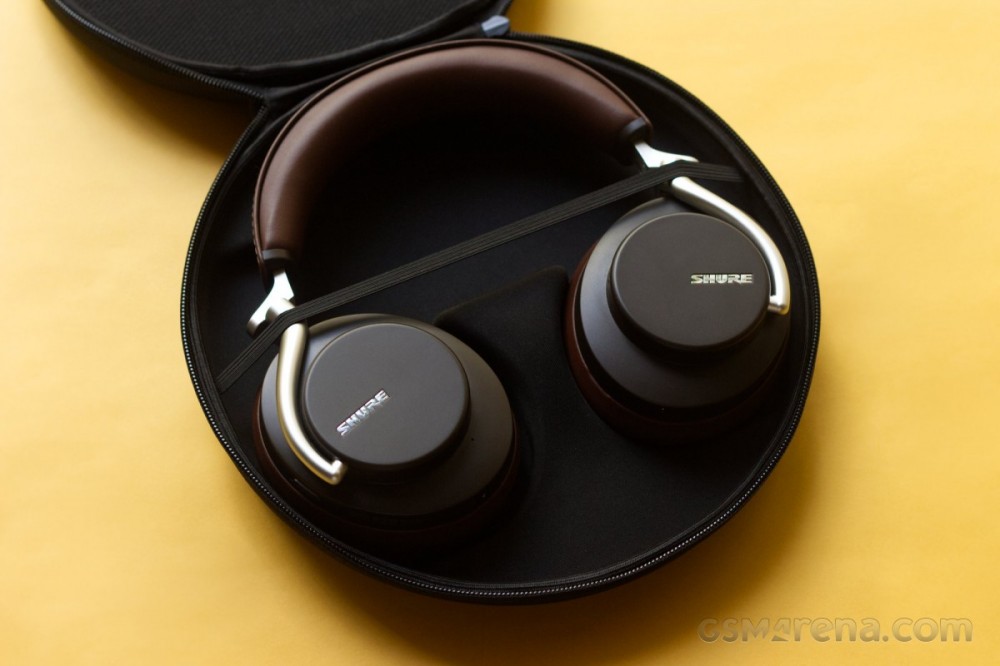
The controls are placed on the right earcup. This includes the three step slider for noise-canceling on/off/environment mode, buttons for volume and playback control, and lastly the power/pairing button. Most of the buttons feel fine to operate and you eventually get used to their position.
What I didn’t like was the slider. It has a deeply unsatisfying sliding action and unusually stiff for such a small control, which makes you apply more force than necessary and then shoot past the toggle you are aiming for. For example, I mostly wanted to toggle between NC on and off, which were positions 1 and 2 but I would often just slide it past 2 to 3 into the Environment mode. I would have to keep a finger on the opposite end that would apply its own force while sliding with my thumb so I control the movement of the slider more precisely and stop it as soon as it reached the second slot.
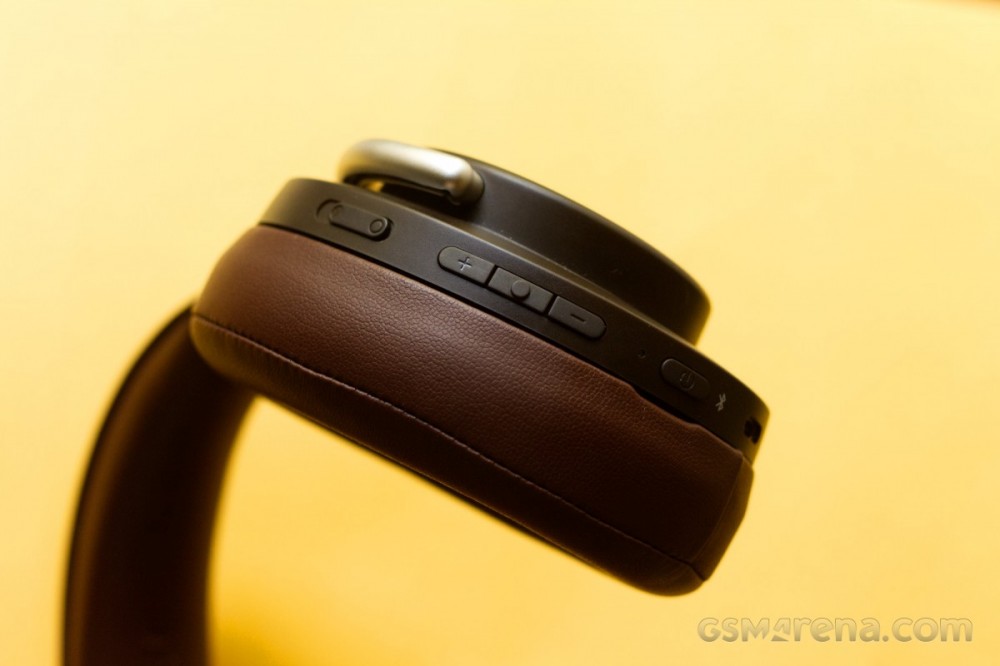
The Aonic 50 are made entirely out of plastic. This includes the yokes that are made to look like metal, just like the fake leather everywhere. A large part of the aesthetics of these headphones is making them look more expensive than they are and not being particularly successful at it. At least the Bose and Sony models own up to the fact that they are plastic without trying to look like something they’re not.
Despite the sea of plastic the Aonic 50 are still an unusually heavy pair of headphones. At 334g, they are heavier than the 1000XM4 (251g) and the Bose 700 (250g) and closer to the AirPods Max (384g). The AirPods Max, however, are made out of aluminum and stainless steel whereas the Aonic 50 are made out of lies and deceit.
Despite all the weight, the Aonic 50 aren’t particularly well-built. My review unit was already creaking after about a month of use. While I don’t necessarily expect them to break, it’s not exactly clear what Shure did with all that weight as the Aonic 50 look and feel pretty much like any other pair of plastic headphones, just heavier.
Comfort
The Shure Aonic 50 are moderately comfortable pair of headphones. The good thing about them are the thick earpads and headband. The earpads are less conforming to the shape of your head than on something like the 1000XM4 but they also don’t feel hard against your ears and are wide enough to accommodate most ear shapes and sizes.
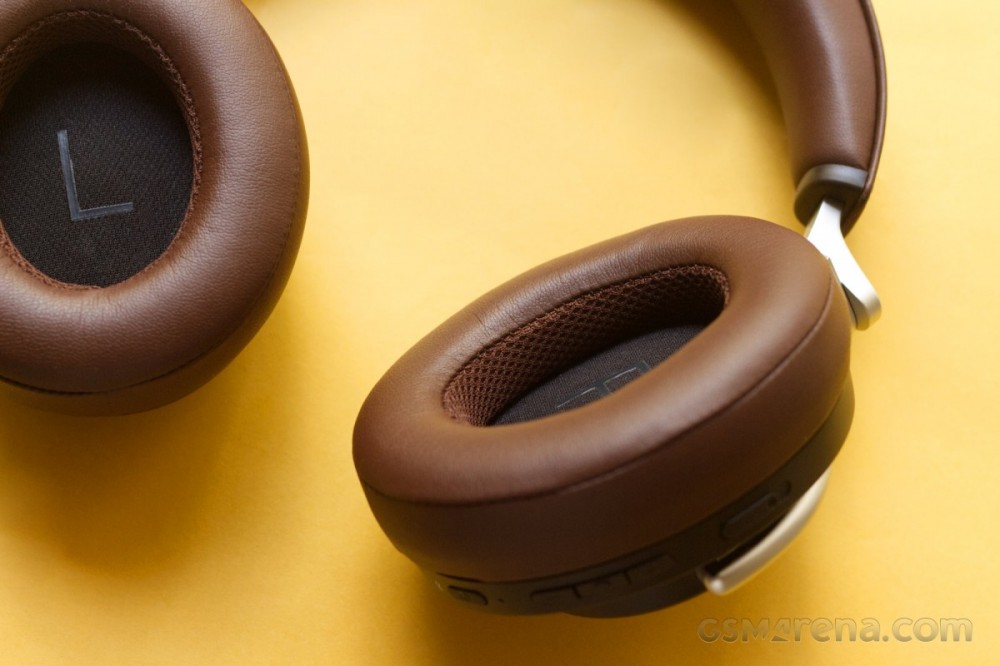
What’s less likable about the headphones is the weight and to some extent, the clamping force. You can’t really forget that you are wearing these headphones and that’s not just because they are wide enough to be in your peripheral vision all the time. You especially notice them if you turn your head as headphones of this size and weight usually have significant inertia and wide center of gravity that can cause your head to swing if you turn it quickly. It can also cause the headphones to slip off if you look down.
In comparison, the Sony and Bose alternatives are more comfortable due to their lower weight and softer earpads. The Aonic 50 feel more like home audio headphones than something you’d want to wear outdoors.
Software and features
The Aonic 50 are compatible with the Shure Play app, available for iOS and Android. Through this app, you can adjust the level of active noise-cancellation, level of the environment mode feature, adjust minor settings, and also update the firmware. The app also has a built-in media player for playing local audio files and an EQ that works only for the built-in player and nothing else.






Shure Play app for Android
The Shure Play app is of dubious practicality. The most use I got out of it was to disable all the beeps and voice prompts the headphones produce when you turn them on/off or change the ANC modes and these settings get saved on the headphones once changed. Shure doesn’t seem to release firmware updates often enough to warrant having the app installed all the time. As for the built-in music player, it’s not great and you likely have one of your own by now. The EQ is also useless as it only works for the music player in the app and nothing else.
The app also can’t remember what headphones you have, unlike the Sony and Bose apps. Every time you launch the app, it does a fresh scan of what Shure device you have connected. If your phone closes the app in the background, it will once again scan when you reopen it. It takes a few second to scan and recognize your connected headphones but it is still a tiresome process that doesn’t need to happen every single time the app is launched.



EQ settings for built-in music player
Moving beyond the app, the Aonic 50 have a good number of features that fortunately don’t require you to have the app at all.
For starters, the Aonic 50 have possibly the best implementation of multi-device pairing I’ve seen. They seamlessly connect to the last two paired devices when powered on. You usually won’t even realize they’ve done this unless you check both the connected devices. On the 1000XM4, you need to go through a process through the companion app to enable this and on the Aonic 50 it just works. And unlike the Sony, you aren’t limited to SBC or AAC here, and both connected device can use any codec, including LDAC.
Speaking of codecs, Shure has gone out of its way to support as many of them as possible. You have your standard SBC and AAC, along with aptX, aptX HD, and aptX Low Latency. Lastly, you also get LDAC.
Shure also decided to up the ante with regards to wired audio. It comes with the standard audio cable (which unfortunately plugs in using a less standard 2.5mm cable on the headphone side and there’s also no airplane adapter provided) but also a USB-C cable, which other than being required for charging can also be used to use the headphones using USB audio.

You can use USB audio mode with most devices, including all Windows and Mac computers and also most Android smartphones. I haven’t tried with any iOS or iPadOS device as I didn’t have the necessary adapter but it’s possible it could work there, too. The USB input accepts audio up to 32-bit/384kHz, which should be plenty for any audio source you may have.
The Aonic 50 feature active noise-cancellation. It has two levels, normal and max, with max being set by default. There is also ambient/transparency mode called Environment mode, which uses the external microphones to play ambient audio through the speakers. You can adjust the intensity of this effect through the Shure Play app.
Unfortunately, the Aonic 50 don’t have any sort of wear detection, which means they won’t auto pause or switch off when you remove them. Shure also doesn’t specify how many microphones these things have and if there are any inside the earcups to measure the internal noise and cancel it out or adjust the sound based on the seal. They also can’t compensate for the air pressure changes like Sony.
Performance
Preface
The Aonic 50 turned out to be a difficult pair of headphones to review. There are clearly some bugs to iron out here in the current version that I tested (0.4.9.0) and although I have informed Shure support about it, I’m not sure if they are going to do anything about the feedback.
The issues largely relate to the inconsistency in the sound between different modes and codecs. The sound is different between ANC on and ANC off by a considerable margin. There is also an issue with how the headphones sound with LDAC codec, but only in 88.2kHz or 96kHz modes compared to other codecs when ANC is enabled.


Test settings
As such, some decisions had to be made with what would be chosen for all the audio tests. Between ANC on and off, it was an easy call; the headphones had to be tested with ANC on as that’s what you’re buying them for. The headphones actually sounded more neutral with ANC off and the compensation curve Shure applies in ANC on mode changes the sound considerably but again, that’s how the headphones are primarily designed to be used and how they are set out of the box. Interestingly, the ANC Normal and ANC Off sound the same, but ANC Max (default) is where the tonality changes considerably.
As for the codec, I decided to forgo LDAC entirely and instead just use aptX HD, which had consistent audio with the other wireless codecs with ANC enabled and seemed like how the headphones were meant to sound. LDAC 88.2kHz and 96kHz made the sound unnaturally louder when ANC was enabled but also completely lost all low-end presence and just became extremely mid-focused. This is the only mode where this happened and it seemed more like an anomaly than a feature.
So finally, the headphones were set to ANC Max and aptX HD for testing with Android and ANC Max and AAC for testing with iOS.
Audio quality
The Aonic 50 are good sounding headphones. Shure deserves praise here for not tuning the headphones to match the typical V-shaped tuning of popular headphones in this segment but rather aim for some semblance of neutrality for more critical listening. However, it doesn’t quite get there and has some limitations that hold it back.
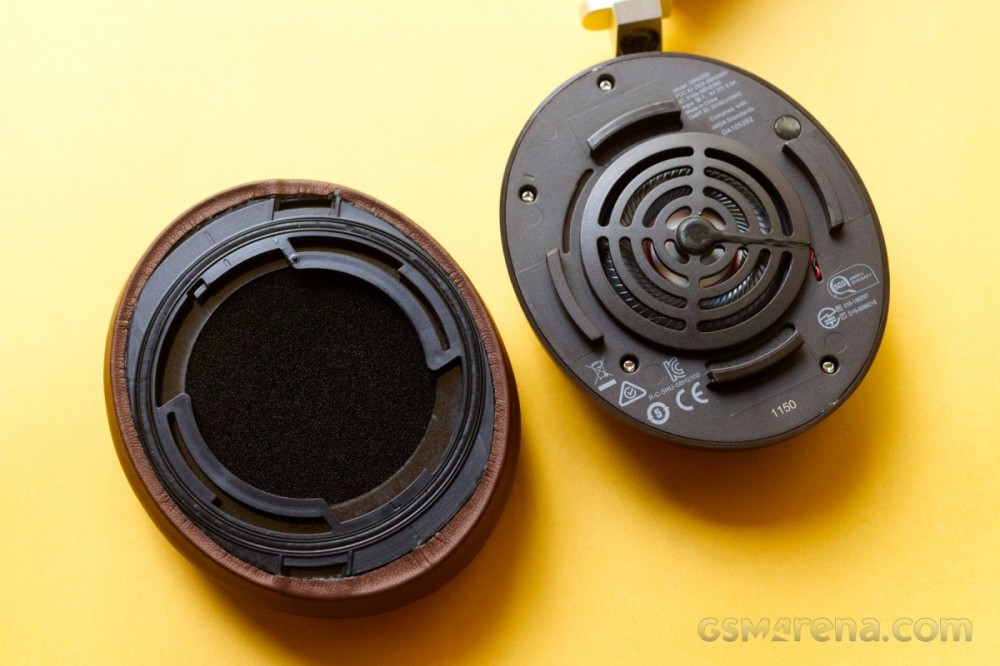
The mid-range is easily the star of the show here. The Aonic 50 have a great a mid-range that is largely even and consistent throughout. Vocals and string instruments have excellent presence and clarity in the mix, making these ideal for listening to a wide genre of content, including movies and games.
The low-end is a bit of a mixed bag. The mid-bass response is quite even and not bloated as is the case with almost every other pair of wireless headphones in this price range. Bass notes have a nice attack and slam that feels punchy without being muddy and overwhelming.
However, the upper-bass region is a bit boosted, which adds some unwanted boost to percussion instruments. The drums in Dreams by Fleetwood Mac, for example, are much more prominent and forward in the mix than they are supposed to be. This isn’t as distracting in the grand scheme of things like an overblown mid-bass response but it can be a bit distracting on some tracks with heavier vocals or lots of percussion instruments.
On the other hand, the low-bass response is quite lacking as the sound just rolls off after the mid-bass. This means you don’t get that low-end rumble that you expect in certain mixes. The Interstellar soundtrack, for example, makes use of the pipe organ a lot. It has a booming low-end on certain tracks like Mountains and No Time For Caution when they hit their crescendo, but you don’t hear much of it on the Aonic 50.

Moving on to the high-end, the tonality here is largely satisfying. There is some tendency to cause some sibilance on certain tracks even though these aren’t necessarily bright or hot sounding headphones. But on most tracks the high-end isn’t particularly offensive and complements the mid-range well.
In terms of overall dynamics, the Aonic 50 aren’t particularly impressive. The sound isn’t especially revealing or high resolution. The level of detail seems on par with other headphones in this price range despite the overall superior tuning. The imaging is decent but the soundstage is mediocre.
I also tested the headphones in wired mode. The analog input doesn’t require the headphones to be on but the USB input does. The audio in analog mode is surprisingly consistent whether the headphones are on or off, which isn’t what we see on other headphones. However, the wired inputs also suffer from the same inconsistent audio issues that the LDAC mode does, where enabling ANC just turns the audio heavily mid-focused and drops the bass entirely.
I don’t consider wired mode to be an important feature on wireless headphones. While it’s a good thing to have in a pinch, you can spend half as much and get significantly better sounding wired headphones if that’s what you really want. The wired modes also have limitations, such as the controls becoming useless and also the lack of microphone functionality. Also, USB cables generally tend to be thick and short and make poor audio cables.
Overall, the Aonic 50 sound decent for their product category. Where they stomp all over their rivals is in the overall tonality and tuning of the drivers, which produces a much cleaner and neutral sound without being tuned for one particular range of the frequency response. On the other hand, they are only average in every other aspect of their audio quality. The inconsistencies with the ANC modes and codec options also leaves a lot to be desired.
Microphone quality
The Shure Aonic 50 have average microphone quality. Voices tend to sound a bit dull and indistinct. It’s okay for most voice calls and none of my callers complained about the call quality but you may want to invest in a wired headset if voice quality is important to you.
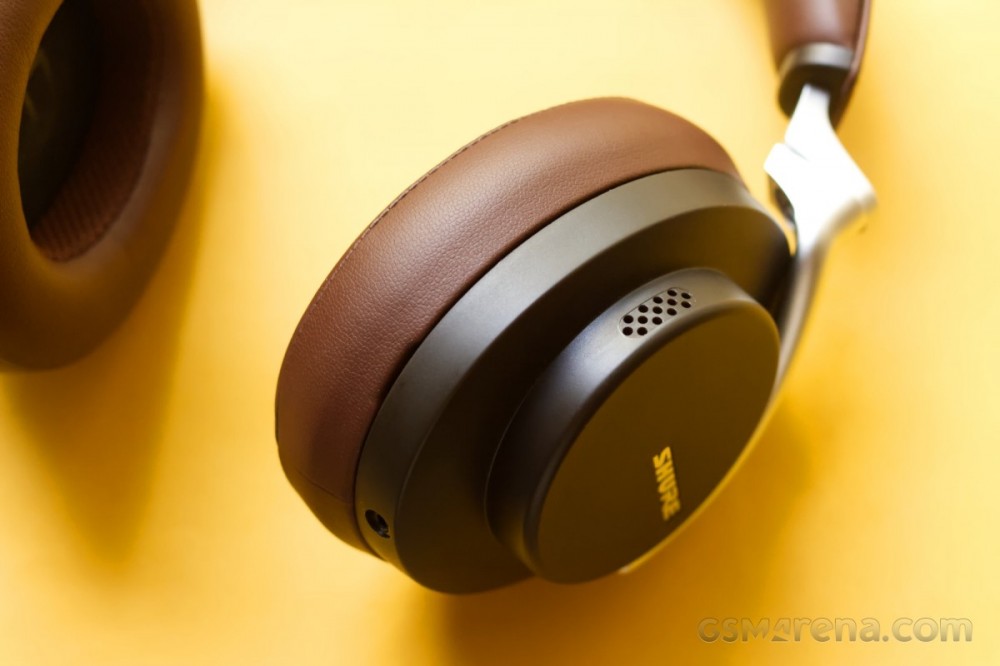
As mentioned before, the microphone does not work in wired mode, regardless of whether it is analog or digital.
Noise-cancellation
The Aonic 50 have mediocre active noise-canceling. The ANC only has some effect on the ambient sound and reduces some of the background hum but by and large you still hear your surroundings fairly clearly, especially when there’s nothing playing on the headphones. The ANC system also produces a distinct hiss when enabled, which is very audible when enabled in an already quiet room.
This is with the ANC set to Max mode. The Normal mode is next to useless as the level of noise isolation it offers can be achieved just by good earpads on most headphones. The earpads on the Aonic 50 are firm and don’t mold to the shape of your head the same way the ones on the Sony or Bose models do. This affects the seal, which not just impacts the ANC performance but also sound quality.
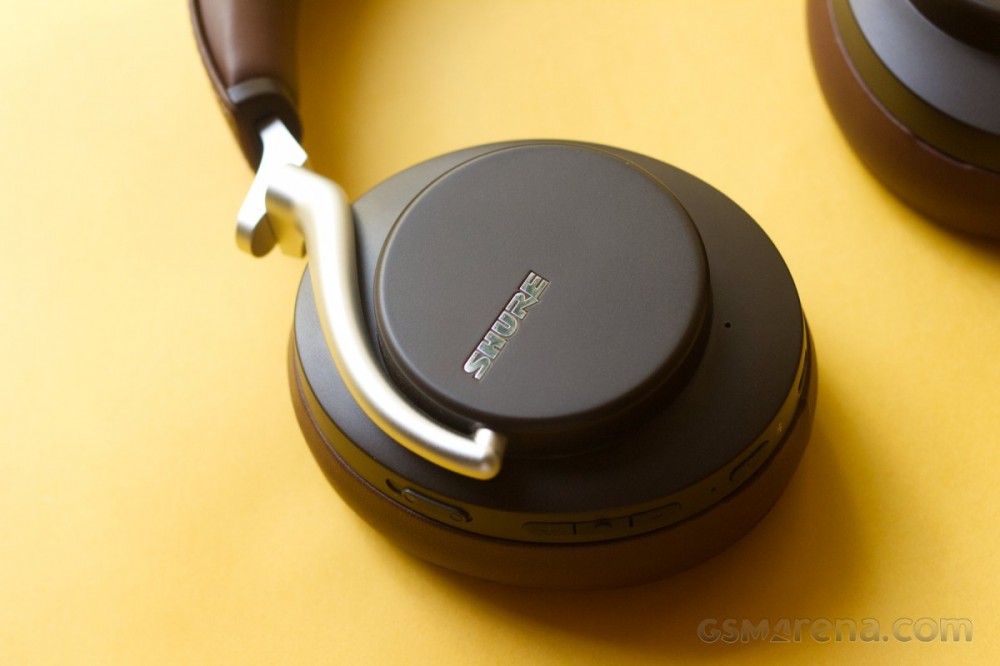
The noise-canceling on my Aonic 50 units also had an issue, where I could hear flutter from the drivers while walking. It was super obvious even with music playing and made it difficult to focus on the audio while walking as there was a constant fluttering sound every time my heels hit the ground. This issue could be limited to my issue as somehow I doubt Shure would ship headphones with such a serious flaw.
As for the Environment mode, it does what it’s meant to do by letting in ambient sound through the speakers. It doesn’t really bother trying to make the sound seem like it’s not coming through speakers and it has a super elevated high frequency response, which makes it sound like it’s constantly raining around you. But, if you just want to be aware of your surroundings for a brief moment while waiting for, say, an airport announcement then it should do the job.
Latency
The Aonic 50 have good latency performance. There is very little perceptible latency while watching videos on all tested platforms and devices, making these suitable for watching content. You may even get away with some casual gaming although it is recommended to use the cable for more serious sessions.
Connectivity
The Aonic 50 had reliable connectivity during my testing. I used the headphones with a variety of devices and there were never any dropouts or any other connection related issue.
Battery Life
Shure claims 20 hours of battery life for the Aonic 50. This figure is on par with what Bose claims for the 700 but is lower than the claimed 30 hour figure for the Sony 1000XM4.
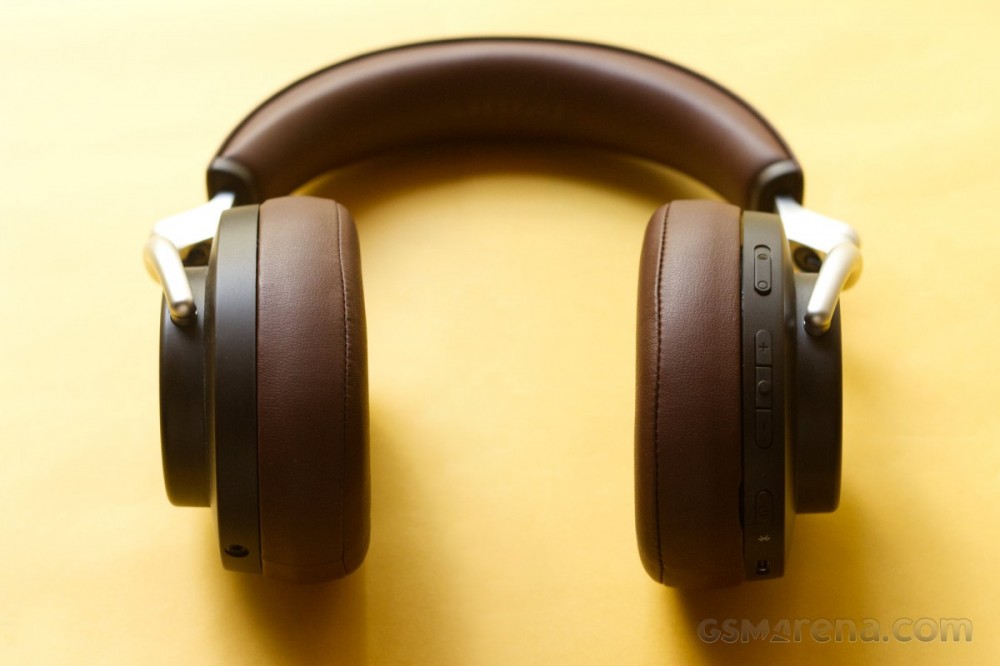
In my testing, I got around 16 hours over multiple test runs using aptX HD. While 16 hours isn’t bad, it is lower than what other big headphones can do. It’s especially disappointing considering the size and weight of these headphones, and you’d think Shure could have fit a larger battery in there.
Shure doesn’t mention how long the headphones will last after a quick 10-minute charge but I got around 2 hours of playback.
Verdict
The Shure Aonic 50 are priced at $399, but since they have been on the market for a while now you can get them for $349 or even less.
All things considered, the Aonic 50 are an okay pair of headphones. I liked their audio quality and they are generally superior to their rivals in this price category in that department. They also offer a wide range of codec options as well as analog and digital wired options. The Aonic 50 also has one of the best implementations of multi-device pairing I’ve seen so far.
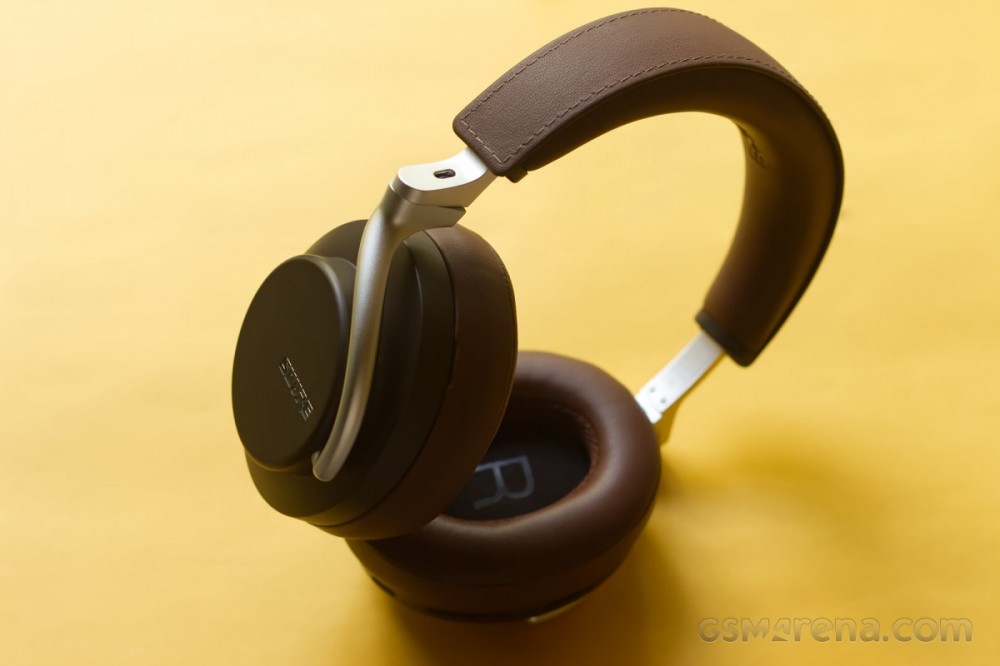
Aside from that, the Aonic 50 are a fairly mediocre pair of headphones. They are large and heavy and not entirely suitable for outdoor usage. The build quality also doesn’t justify the weight. The microphone performance is average and the noise-cancellation is mediocre. Even the battery life is below average for such large headphones. The Shure Play app also doesn’t offer any meaningful functionality and is behind everybody else in basic usability.
The headphones also have some quality control issues. Different ANC modes and codecs produce vastly different sound in a way that doesn’t seem intentional. My review unit had plenty of other issues, such as clicking sounds every time the amplifier or DAC inside activated or deactivated itself, a buzzing sound in the microphone, and the aforementioned fluttering sound while wearing these headphones while walking.
All things considered, I would pass on the Aonic 50 unless the headphones and the app see some significant improvements through future updates. Even though they don’t sound as good, the Sony WH-1000XM4 and the Bose Headphones 700 are better headphones overall.
Source: Gsmarena
Pros
- Good audio quality
- Seamless multi-device pairing
- Wide codec support
- USB audio input
Cons
- Large and heavy
- Limited folding options
- Inconsistent audio quality across different modes
- Mediocre noise-canceling
- Average microphone
- Underwhelming battery life
- Poor companion app

Comments